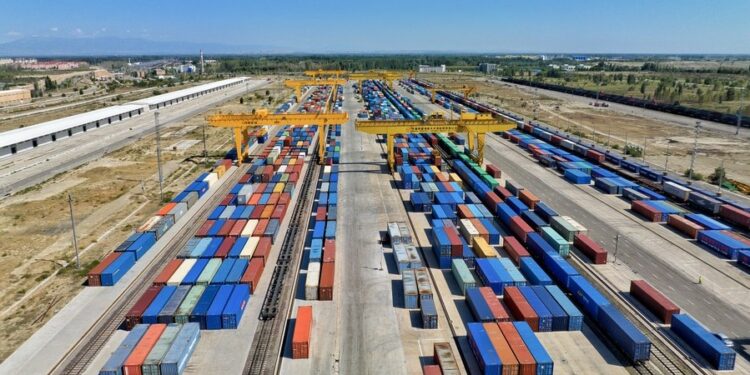The Xinjiang Uygur autonomous region reported foreign trade worth 362.79 billion yuan ($50 billion) in the first 10 months of this year, marking a 28 percent year-on-year growth rate, the highest among all provincial-level regions in China.
In 2023, Xinjiang’s total foreign trade stood at 357.3 billion yuan. From January to October this year, exports rose by 28.9 percent to 308.29 billion yuan, while imports grew by 23 percent, reaching 54.5 billion yuan.
Private enterprises drove 92.4 percent of Xinjiang’s total foreign trade during this period, with their trade activity increasing by 26.8 percent year-on-year, according to regional customs data.
Xinjiang has diversified its export markets, reducing dependence on the five Central Asian nations while significantly expanding trade with Southeast Asian countries.
Trade with the Association of Southeast Asian Nations (ASEAN) surged 243.7 percent year-on-year in the first 10 months, and trade with members of the Regional Comprehensive Economic Partnership (RCEP) grew by 206.4 percent.
Lin Shen, a researcher at the Chinese Academy of Social Sciences, credited the Belt and Road Initiative and improved infrastructure, including transportation networks, for attracting private investment to Xinjiang and enhancing trade.
The China-Europe Railway Express has improved the efficiency and affordability of transporting goods, boosting Xinjiang’s economic and trade collaboration with foreign regions.
Xinjiang’s strong industrial and energy foundation aligns with the import needs of Southeast Asian nations for minerals, agricultural goods, and electromechanical products, creating promising prospects for future cooperation, Lin said.
The region’s products, known for their quality, competitive pricing, and adaptability to different markets, have earned recognition overseas, driving demand and trade growth, according to Lin.
Customs data revealed that free trade and comprehensive bonded zones have been instrumental in boosting Xinjiang’s trade. Free trade zones alone contributed 145.7 billion yuan, or 40.2 percent, to the region’s total trade during January-October.
Additionally, Xinjiang’s bonded zones in Kashgar, Khorgos, Alashankou, and Urumqi collectively achieved a trade value of 147.69 billion yuan, up 24.1 percent year-on-year, accounting for 40.7 percent of the region’s total trade.
Related Posts

















